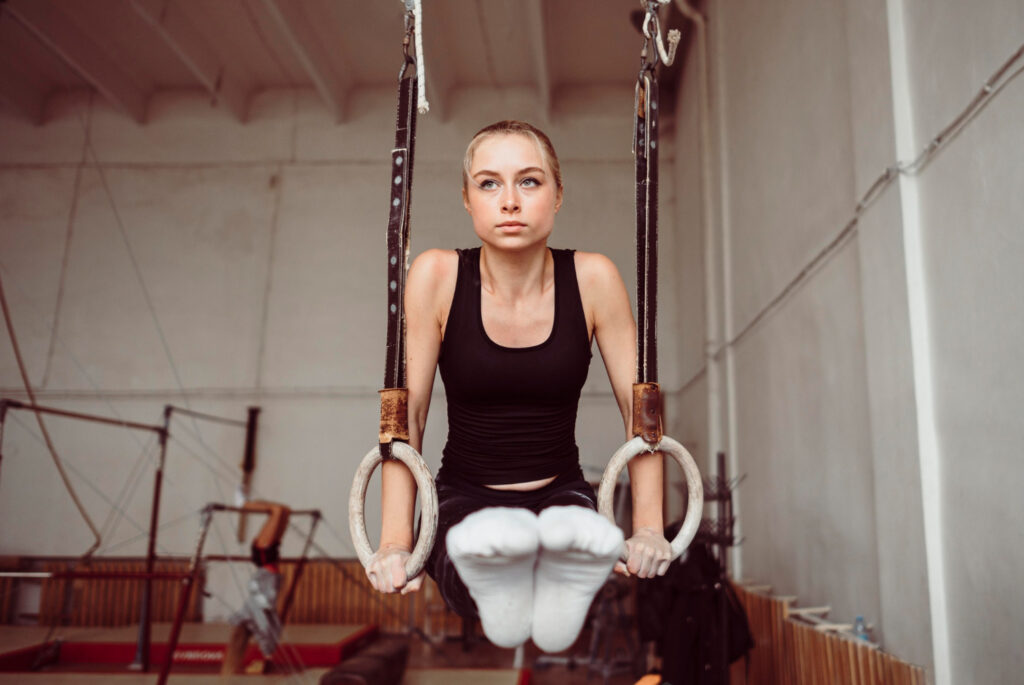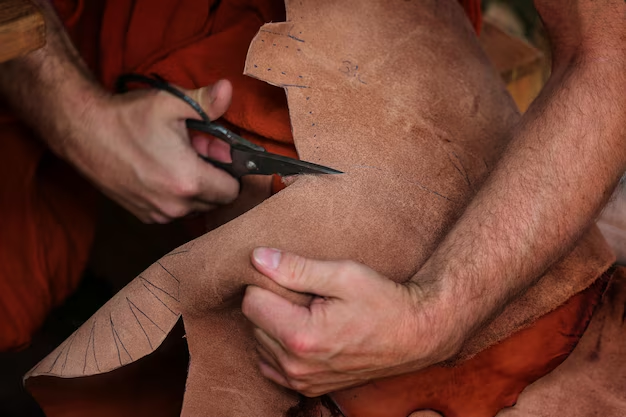The gymnastics rings Olympics event is one of the most powerful and respected disciplines in artistic gymnastics. It may not have the flashy choreography of floor routines or the fast pace of vault, but it carries its own kind of beauty. The rings test pure strength, body control, and discipline, making it a true highlight of the Games. For athletes, this event represents years of training, building muscles that can hold still against gravity. For fans, it delivers unforgettable performances filled with intensity and elegance.
Today, gymnastics rings remain a central part of men’s artistic gymnastics in the Olympic Games. They remind us that the Olympics are not just about speed or flexibility but also about human strength, balance, and endurance. Watching a gymnast hold themselves motionless in midair is more than a sport — it is a display of physical mastery and mental focus.
The Role of Gymnastics Rings in Olympic Gymnastics
In the Olympic program, the rings are one of the six apparatus used in men’s artistic gymnastics. Unlike floor or pommel horse, which rely heavily on rhythm and fluid movement, the rings stand out because they demand stillness. Athletes must control their bodies while suspended above the ground, making even the smallest shake visible to judges and viewers.
The gymnastics rings Olympics event showcases unique qualities that no other apparatus does. It is about strength in its rawest form. A gymnast must not only lift their body but also stop it from swaying, keeping every movement deliberate. This combination of strength, balance, and stillness sets the rings apart and makes them one of the most respected apparatus in the Olympic Games.
History of Gymnastics Rings in the Olympics
The story of gymnastics rings at the Olympics goes back to the very beginning of modern artistic gymnastics. Rings were first included in the men’s gymnastics program at the 1896 Athens Games, the very first modern Olympics. At that time, routines were simple compared to today, but they already tested strength and stability.
Over the years, the event has evolved. In the early 20th century, gymnasts performed shorter routines with fewer elements, focusing mainly on holds and simple swings. By the mid-1900s, the sport had developed into a blend of strength holds, controlled swings, and dismounts that impressed audiences worldwide. As gymnastics techniques advanced, so did the rings event. Today’s Olympic rings routines are a mix of tradition and innovation, combining classic moves like the iron cross with new, high-difficulty skills that push human limits.
Rules and Format of the Rings Event
The rings event at the Olympics is carefully judged under rules set by the International Gymnastics Federation (FIG). Each gymnast performs a routine lasting about 50 to 70 seconds. The performance must include a balance of strength holds, swing elements, and a final dismount.
Judges score routines based on two main factors: difficulty and execution. Difficulty refers to the level of skills performed. More advanced moves, such as a Maltese hold or a double twisting double back dismount, bring higher difficulty values. Execution measures how well those moves are performed. Even a small shake or wobble in the rings can lower the score, as the apparatus is unforgiving. The gymnast with the best balance of high difficulty and perfect execution usually wins.
Famous Olympic Gymnasts on Rings
The gymnastics rings Olympics event has produced legendary athletes whose performances have defined the sport. One of the most famous is Italian gymnast Jury Chechi, known as the “Lord of the Rings,” who dominated the event in the 1990s and won Olympic gold in 1996. Another icon is Chen Yibing of China, often called the “King of Rings,” who won multiple world titles and Olympic medals, including gold in Beijing 2008.
Memorable moments are not limited to gold medalists. Many athletes have left lasting impressions through performances that showed strength, courage, and artistry. Each Olympic cycle introduces new stars who raise the bar, proving that the rings are not just about physical ability but also about legacy and inspiration.
Training and Skills Behind Olympic Rings
Competing in the gymnastics rings Olympics requires years of preparation. Athletes train their core, shoulders, and arms to handle the unique demands of the apparatus. Rings routines demand strength that goes beyond normal weightlifting. A gymnast must not only lift their body weight but also hold it still, which requires deep stabilizing muscles that few sports develop at the same level.
The skills performed on the rings are a mix of static holds, dynamic swings, and controlled dismounts. Common moves include the iron cross, where the gymnast holds their body in a cross position with arms stretched straight to the sides, and the planche, where the body is held parallel to the ground. Each skill requires precise technique, perfect body alignment, and absolute control. Training for these skills involves countless hours of conditioning, strength exercises, and repetition.
Gymnastics Rings in Modern Olympic Games
In today’s Olympics, the rings remain a men-only event within artistic gymnastics. While women compete on apparatus such as balance beam and uneven bars, the rings are part of the men’s program because of their strength-based nature. That said, the rings continue to evolve in difficulty, with athletes pushing the limits of what can be done.
Modern rings routines are far more advanced than in past decades. Athletes perform combinations of multiple strength holds, linking one into another without rest. They also perform complex swinging elements that end in dramatic dismounts, often twisting multiple times before landing. This mix of tradition and innovation makes the rings one of the most exciting events to watch, even for casual fans.
Younger generations of athletes are constantly raising the standard. Each Olympic Games introduces new skills, more difficult combinations, and greater precision. The gymnastics rings Olympics event is proof that even in a sport with deep traditions, there is always room for evolution.
Conclusion
The gymnastics rings Olympics is more than just another event in artistic gymnastics. It is a test of strength, discipline, and courage. From its origins in the first modern Olympics to the spectacular routines seen today, the rings have always represented human determination and athletic excellence.
The event continues to inspire fans and athletes alike. It reflects the core spirit of the Olympic Games: pushing human limits, honoring tradition, and celebrating skill. As long as the Olympics exist, the rings will stand as a symbol of power, stability, and grace.
FAQs
1. When were gymnastics rings first included in the Olympics?
Gymnastics rings were first introduced in the 1896 Athens Olympics, making them one of the original events in men’s artistic gymnastics.
2. Is the rings event only for men in Olympic gymnastics?
Yes. In the Olympics, the rings are part of the men’s artistic gymnastics program. Women’s artistic gymnastics features other apparatus such as balance beam and uneven bars.
3. What makes the rings event so challenging compared to other apparatus?
The rings are extremely difficult because they move freely, offering no stability. Gymnasts must control every shake and hold their bodies perfectly still, which demands exceptional strength and balance.
4. Who are some of the most successful Olympic rings champions?
Legends include Jury Chechi of Italy, Chen Yibing of China, and Eleftherios Petrounias of Greece, each known for dominating the rings at international competitions and the Olympics.
5. How is difficulty scored in rings routines at the Olympics?
Difficulty is measured by the complexity of skills performed. The harder the strength holds, swings, and dismounts, the higher the difficulty score. Judges then combine it with execution to determine the final score.




